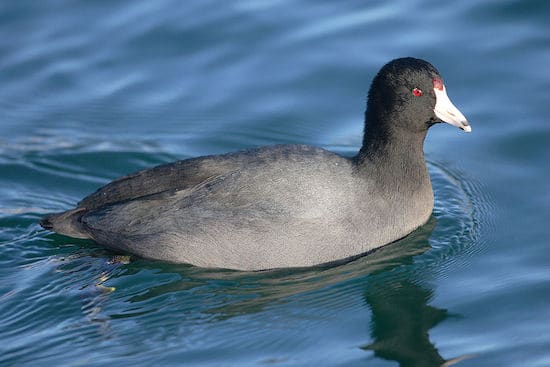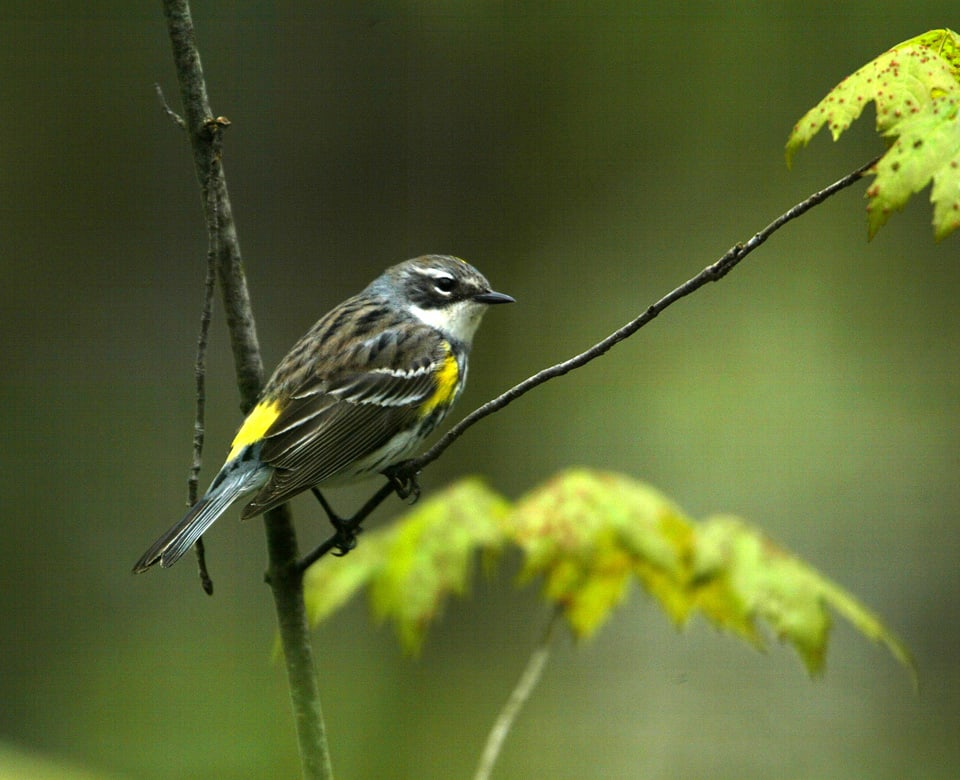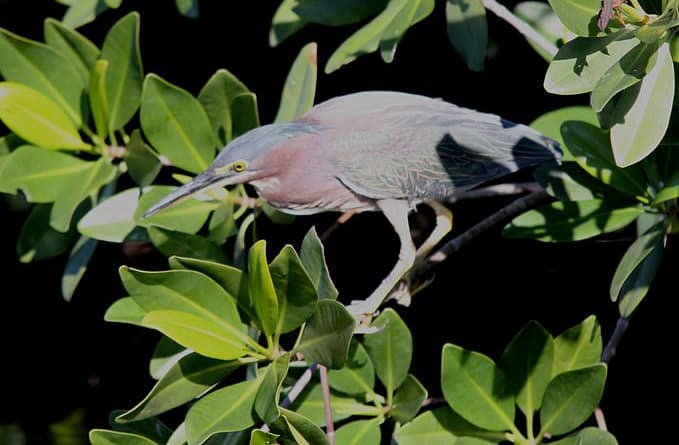What looks like a duck and acts like a duck, but is not a duck? It’s the American coot, of course. Coots are duck-like in many ways, but they are actually members of the rail family and are the most common (and most commonly seen) of all the rails. Like ducks, coots are excellent swimmers and use this ability to find and eat aquatic vegetation.
However, coots are reluctant and awkward fliers. They must run, pattering across the water’s surface and flapping madly to lift their heavy bodies into the air. Chunky and almost all black with a contrasting white bill and red eyes and forehead patch, the coot is hard to mistake for anything else.
The common gallinule (common moorhen) and purple gallinule are similar in shape, but both are more colorful (the purple gallinule much more so) and less common than coots. Coots swim using the lobed toes on their powerful feet, and when swimming they bob their heads back and forth with a “funky chicken” motion.
Listen for
Coots are raucous, loud birds that utter a variety of grunts, cackles, and croaks.
Find it
American coots are widespread across North America, especially in winter when they can be found in huge flocks on large bodies of water. They breed throughout the central and western portions of the continent, and they are year-round residents in spots in the South. During the breeding season, coots prefer ponds, lakes, and marshes of almost any size, provided that they have large stands of tall reeds, such as cattails.
Feed it
Finding most of their food on or below the surface of the water, coots dabble, swim, and dive when foraging. They are equally at home on land, grazing on the grass of city parks and golf courses. Their diet is largely vegetarian with the main menu items being duckweed, algae, and various pondweeds and sedges.
American Coot Nesting Behavior
The female American coot builds a floating, basket-shaped platform of vegetation with a lined cup to hold the eggs. She lays up to a dozen eggs and incubates them for about 23 days. Young coots have shiny, bald, red heads and golden down. This adaptation is thought to trigger feeding by the parents. Babies leave the nest after a day or so and are able to find food on their own shortly thereafter.
WOW!
Hatchling coots can swim very well within a few hours of hatching. Coots are aggressive birds that often steal food items from nearby ducks. Bullies!




